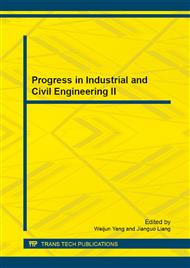p.441
p.445
p.450
p.454
p.460
p.466
p.470
p.474
p.478
Summary on Research Advances on the Reservoir Bank Instability
Abstract:
The reservoir bank instability is the outcome combined the action of the external factors with the action of the internal factors. The limit equilibrium analysis, the strength reduction finite element method, the saturated/unsaturated seepage coupling and so on were applied to analyze the reservoir bank stability. The condition analogy graphical solution methods, the mathematical analysis method, the balanced cross-section method and so on were applied to forecast the reservoir bank stability. The reservoir bank instability mechanism depends on the physical action, the chemical action and the mechanical action of the water in the reservoir bank rock and soil. At present, the drainage measure, the cutting slope and reducing load measure, the retaining and supporting measure , the anti-slide piles measure and so on have been widely used to control the reservoir banks instability. Aiming at the research status of the reservoir bank instability, the problems in study and the suggestions for future work are pointed out in this paper.
Info:
Periodical:
Pages:
460-465
Citation:
Online since:
September 2013
Authors:
Price:
Сopyright:
© 2013 Trans Tech Publications Ltd. All Rights Reserved
Share:
Citation:


